Crew Flight Test
For the first time, Starliner carried crew to the ISS. An important milestone on the path to certification. The spacecraft’s manual piloting capabilities were proven with precision and control.
SWIPE LEFT OR RIGHT TO LEARN
MORE ABOUT THE PATH
TO LAUNCH

The Rollout
April 16, 2024
The first Starliner to fly astronauts, named Calypso, rolled out of its factory with its crew and teammates standing by to wish the spacecraft farewell. In preparation for its return to space, Calypso was transported to United Launch Alliance’s Vertical Integration Facility at Cape Canaveral Space Force Station and stacked atop its ride, the Atlas V rocket. The Crew Flight Test astronauts later practiced pre-launch procedures there, inside Starliner, ahead of liftoff.

The Launch
June 05, 2024
Starliner launched at 10:52 a.m. Eastern time on an Atlas V rocket with NASA astronauts commander Butch Wilmore and pilot Suni Williams on board. In addition to the crew, Starliner carried about 760 pounds of cargo up, including a new urine processor to replace one with a faulty pump on the ISS.

The Docking
June 06, 2024
Wilmore and Williams made history when Starliner docked to the forward port of the Harmony module at 1:34 p.m. Eastern time, becoming the first Starliner crew to be ferried to the ISS. The precisely choreographed flight plan to the orbiting lab included a combination of manual steering by the crew and autonomous maneuvers by Starliner.

The Landing
September 07, 2024
Starliner returned to Earth at 12:01 a.m. Eastern time, making a bull’s-eye touchdown at White Sands Space Harbor in New Mexico. The spacecraft performed a flawless undocking, deorbit, and reentry leading to a beautiful nighttime landing in the desert. With this arrival, Calypso became the first reused American orbital capsule to land on land.
Orbital Flight Test-2
A historic first step toward carrying crew to the ISS. Starliner expanded its reach in low Earth orbit by docking to the International Space Station.
SWIPE LEFT OR RIGHT TO LEARN
MORE ABOUT THE PATH
TO LAUNCH
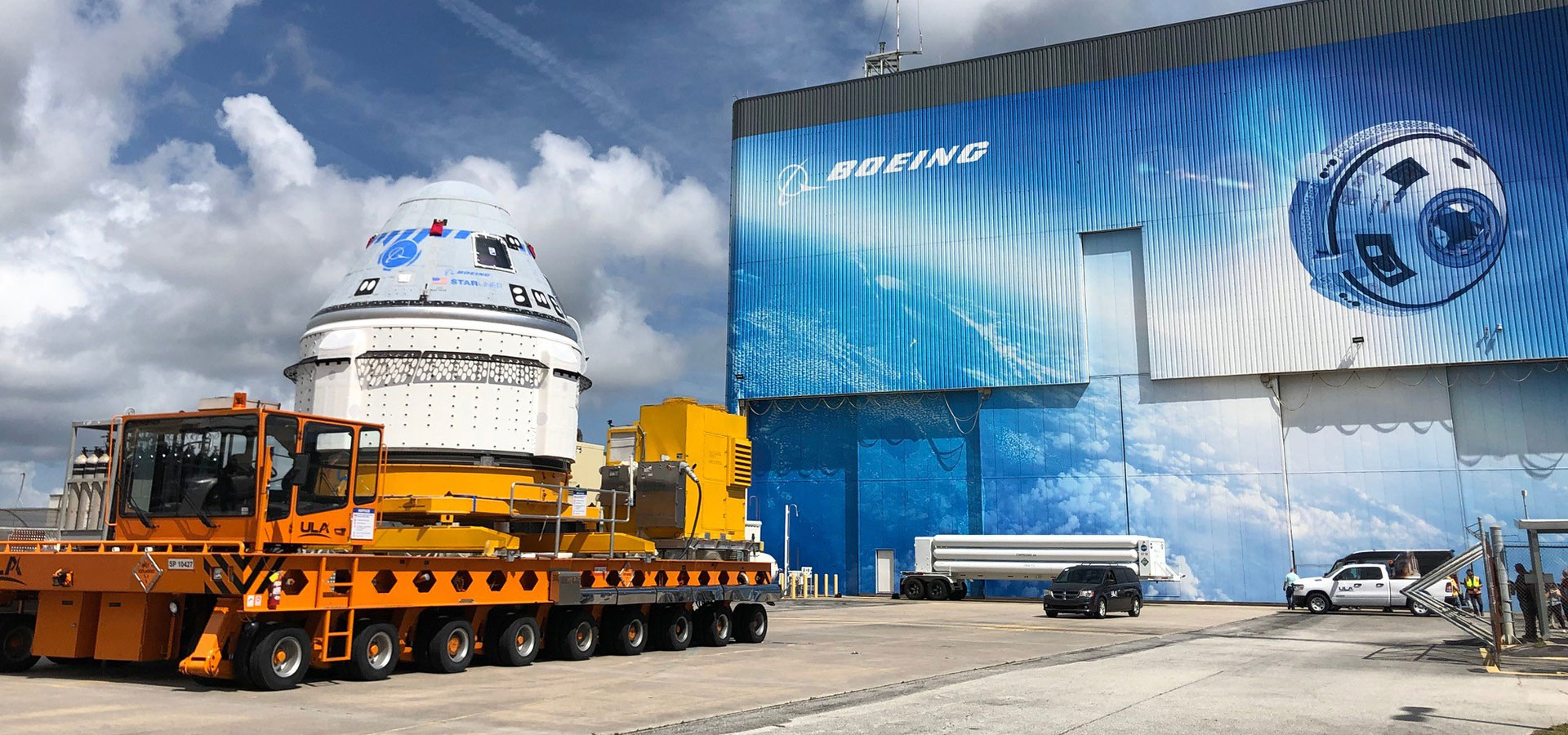
The Rollout
May 4, 2022
Sitting on a transport vehicle with a top speed of 10 mph (16 kph), Starliner rolled out of Boeing’s Commercial Crew and Cargo Processing Facility at NASA’s Kennedy Space Center in Florida. A carefully orchestrated trek took it to United Launch Alliance’s Vertical Integration Facility at Cape Canaveral Space Force Station. After about an hourlong journey, Starliner was hoisted and mated to the ULA Atlas V rocket that would soon launch the uncrewed spacecraft to orbit on Orbital Flight Test-2.
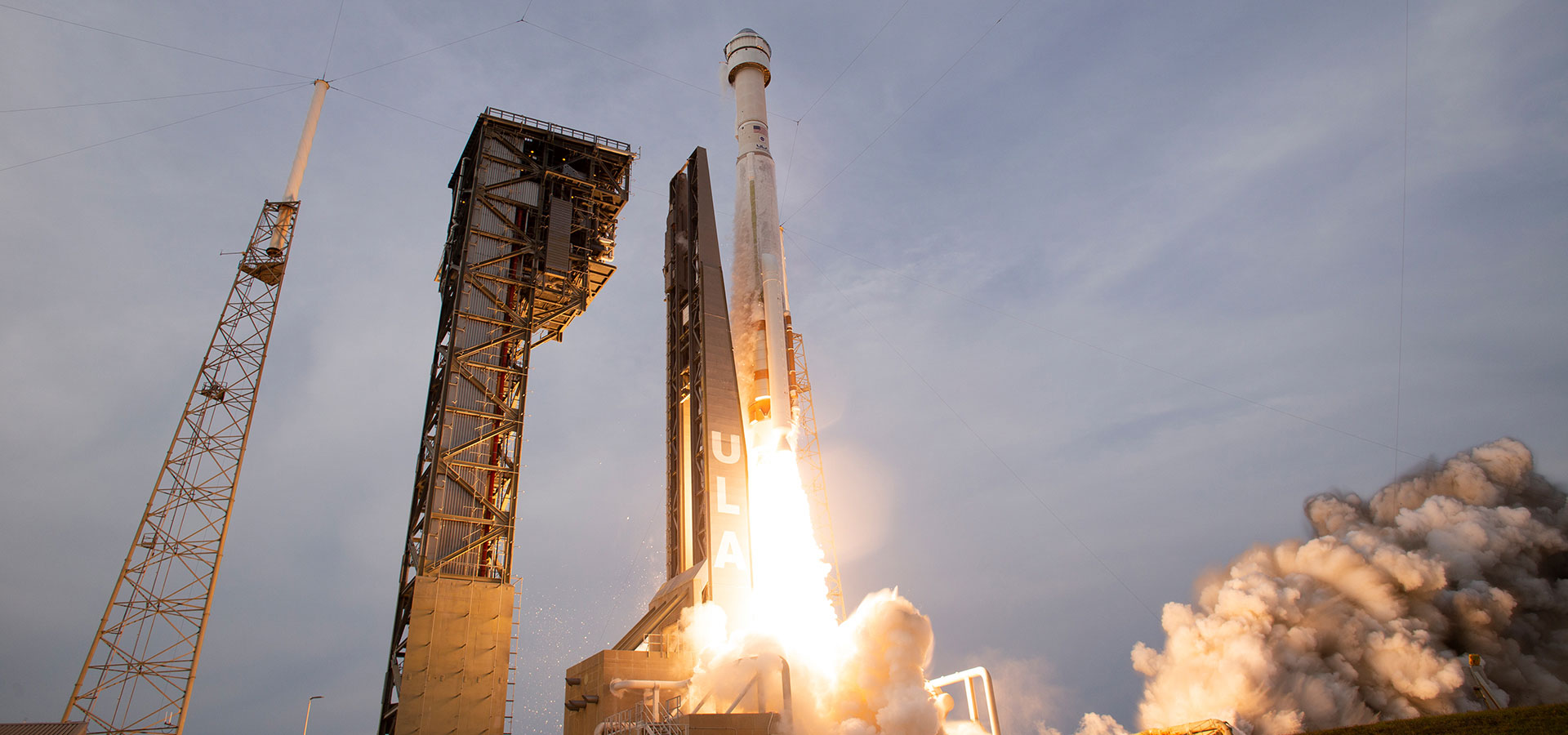
The Launch
May 19, 2022
Starliner launched at 6:54 p.m. Eastern time atop its United Launch Alliance Atlas V rocket. The Atlas V’s RD-180 main engine and two solid rocket boosters generated more than 1.5 million pounds of thrust to lift the rocket away from the pad and across the sky.
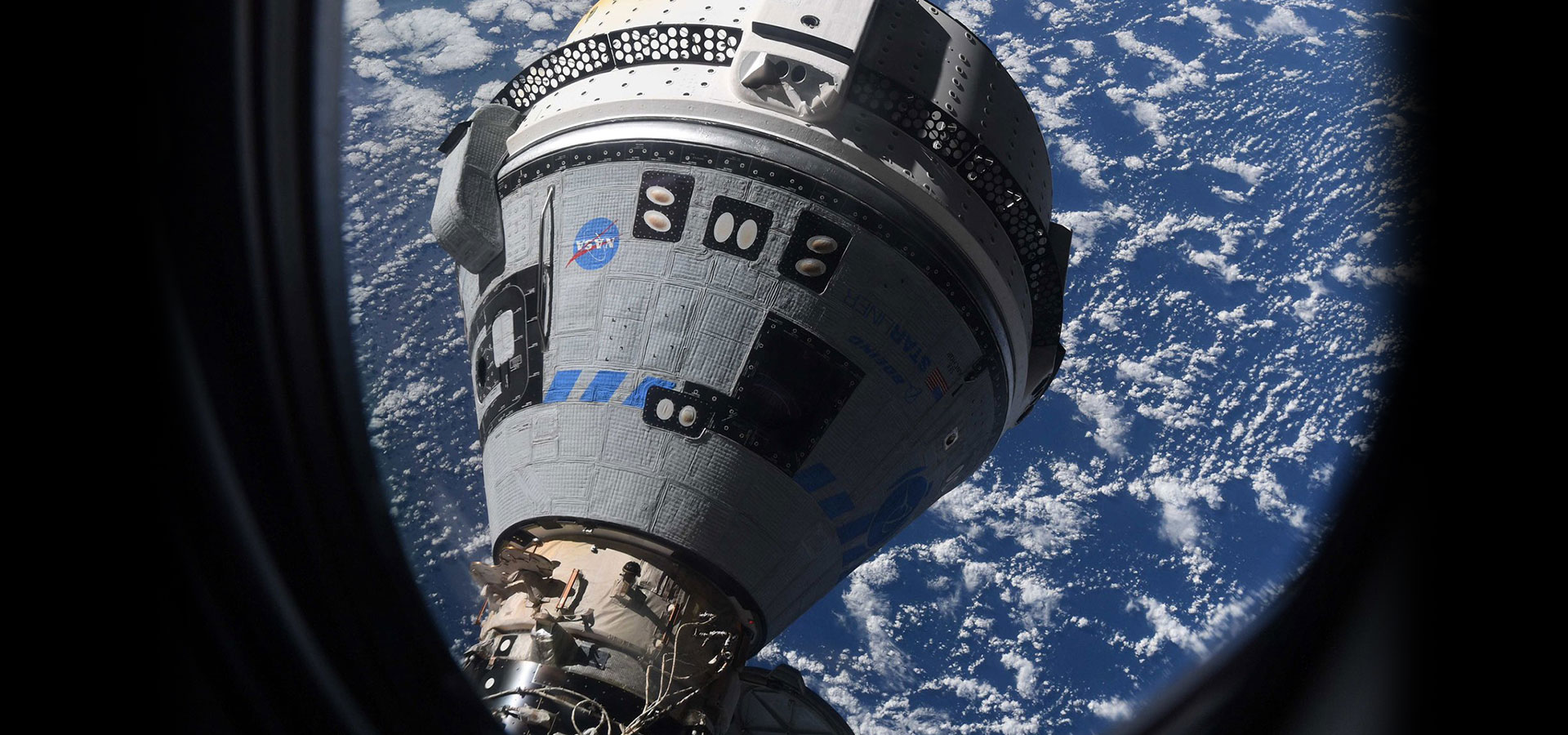
The Docking
May 20, 2022
Tally-ho! Starliner docked to the International Space Station for the first time at 8:28 p.m. Eastern time as the two vehicles orbited 250 miles (400 kilometers) above Earth. Demonstrating Starliner’s ability to rendezvous and connect with the orbiting laboratory on its own was a top objective of Orbital Flight Test-2. Leading the way was Starliner’s Vision-based, Electro-optical Sensor Tracking Assembly. VESTA acts as the spacecraft’s eyes, determining its location relative to the stars.
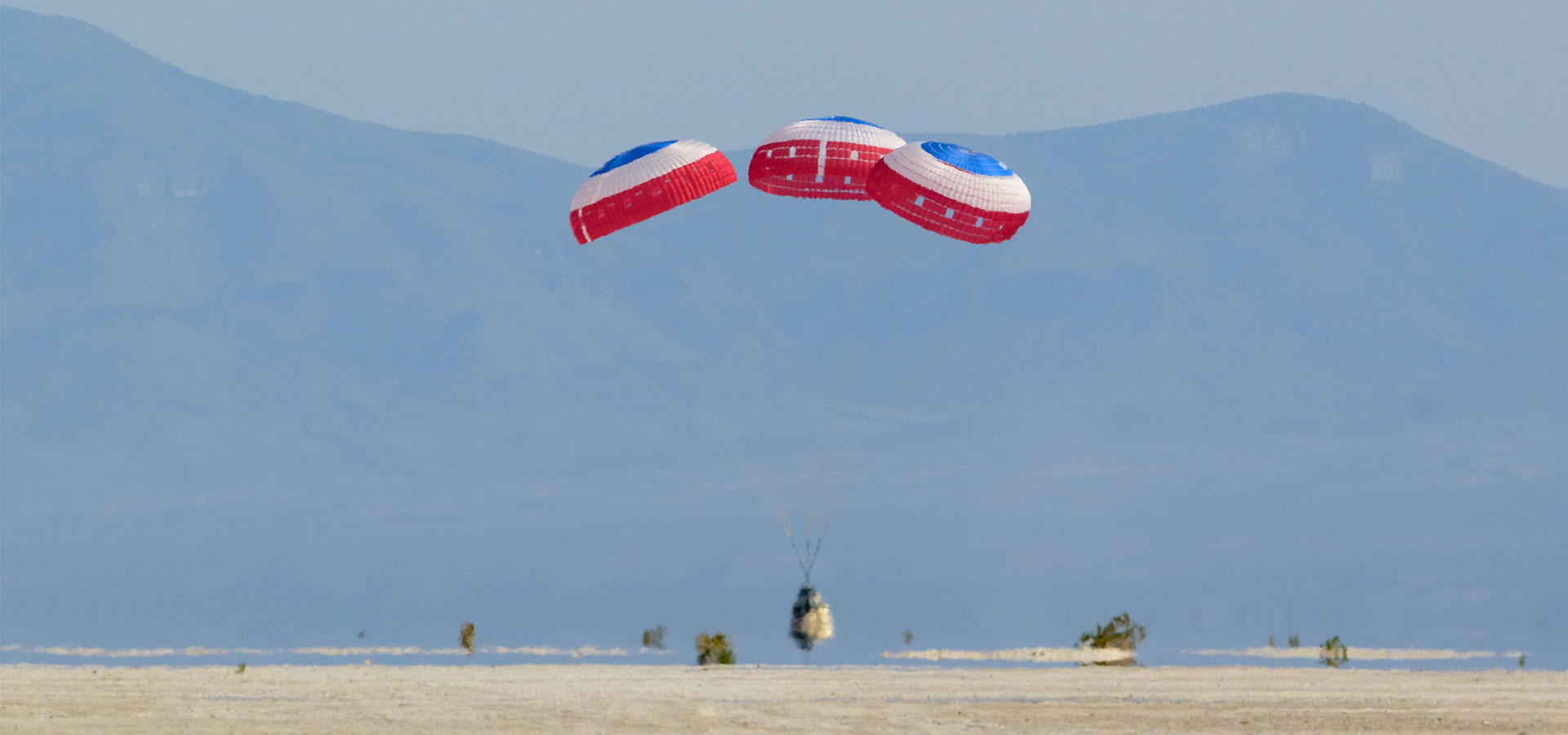
The Landing
May 25, 2022
Starliner landed at White Sands Space Harbor in New Mexico at 6:49 p.m. Eastern time. The spacecraft touched down in a safe, stable position after completing all of its undocking, deorbit, reentry and landing maneuvers. It orbited Earth 94 times, covered a distance of more than 2.4 million miles (3.9 million kilometers), and achieved all its test objectives for OFT-2, paving the way for crewed flights.
Orbital Flight Test
An early return and safe landing with lessons for next time. A space transportation system designed for professional astronauts, researchers and adventurers.
SWIPE LEFT OR RIGHT TO LEARN
MORE ABOUT THE PATH
TO LAUNCH
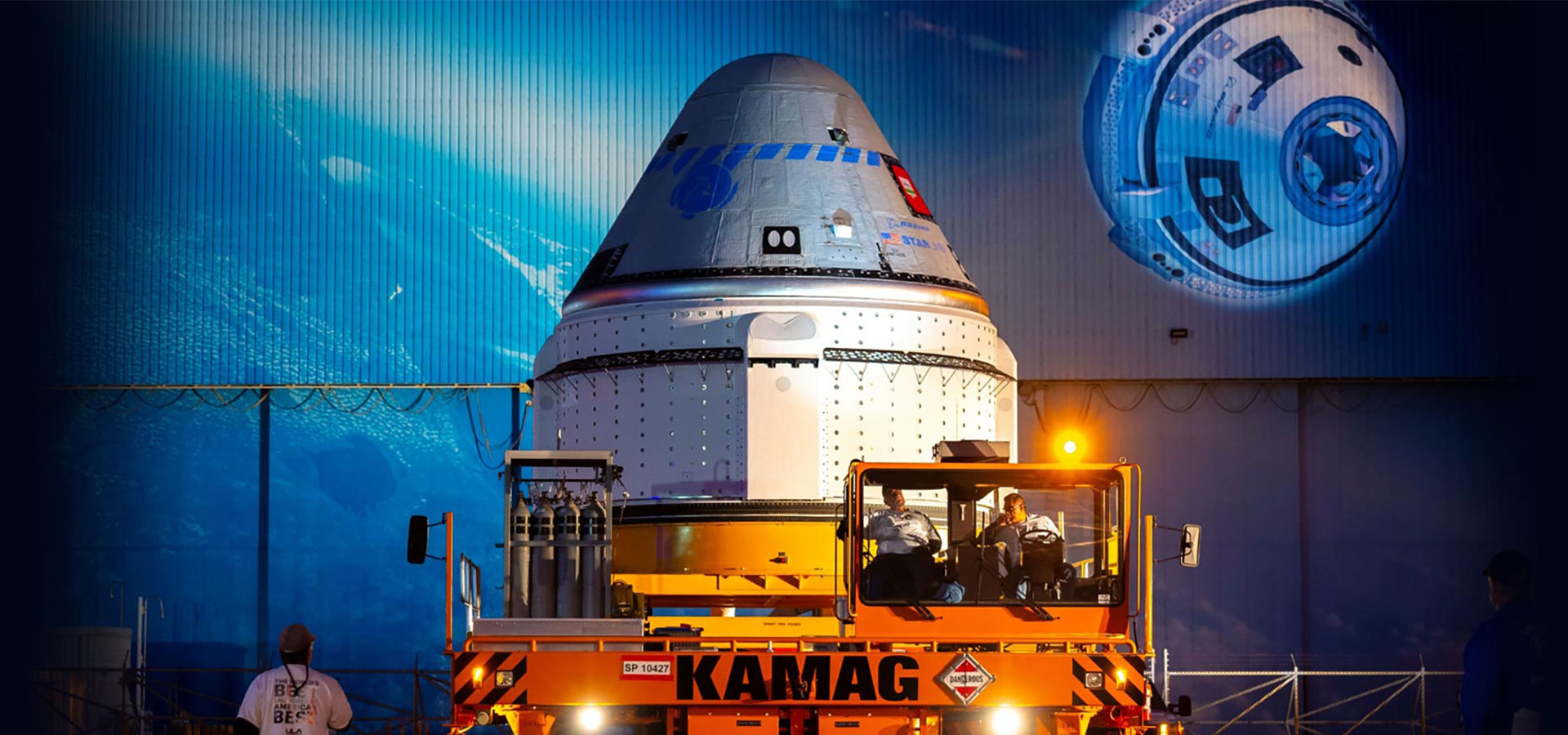
The Rollout
November 21, 2019
In the middle of the night and surrounded by employees, Starliner rolled out of Boeing's Commercial Crew and Cargo Processing Facility to begin mating operations. It was lifted atop United Launch Alliance's Atlas V rocket at Cape Canaveral Air Force Station's Space Launch Complex 41 ahead of the first uncrewed Orbital Flight Test.
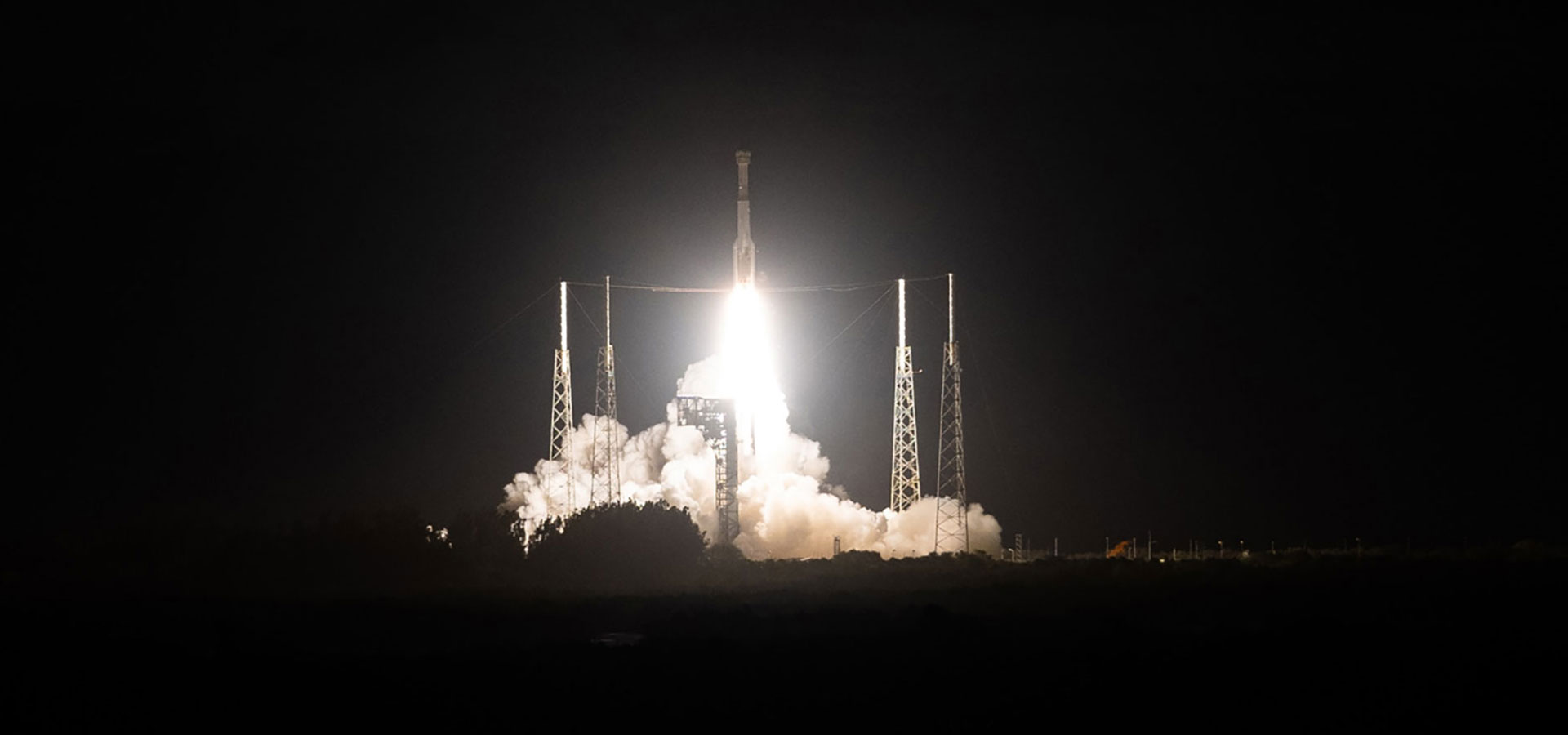
The Launch
December 20, 2019
At 6:36 a.m. Eastern time, Starliner launched on its first flight. The United Launch Alliance Atlas V rocket performed correctly, placing Starliner in the intended suborbital trajectory for the uncrewed Orbital Flight Test.
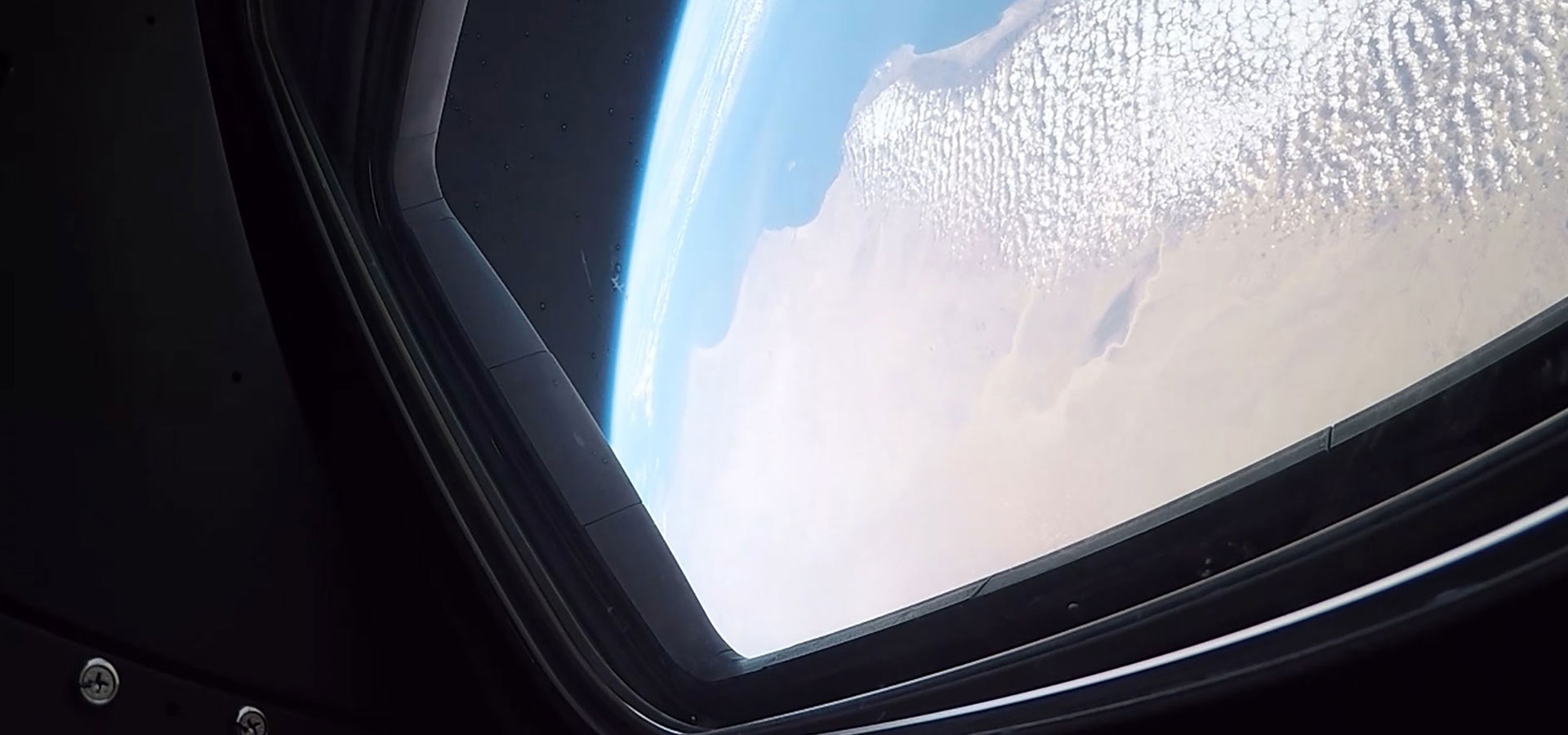
On Orbit
December 20, 2019
After separation from the Atlas V rocket, Starliner experienced a problem. The spacecraft’s internal mission timer was set incorrectly, causing Starliner to miss its orbital insertion burn. Quick intervention from mission controllers placed Starliner in a lower, but stable, orbit. The NASA and Boeing teams decided not to dock to the International Space Station. Instead, they focused on landing early while completing as many mission objectives as they could.
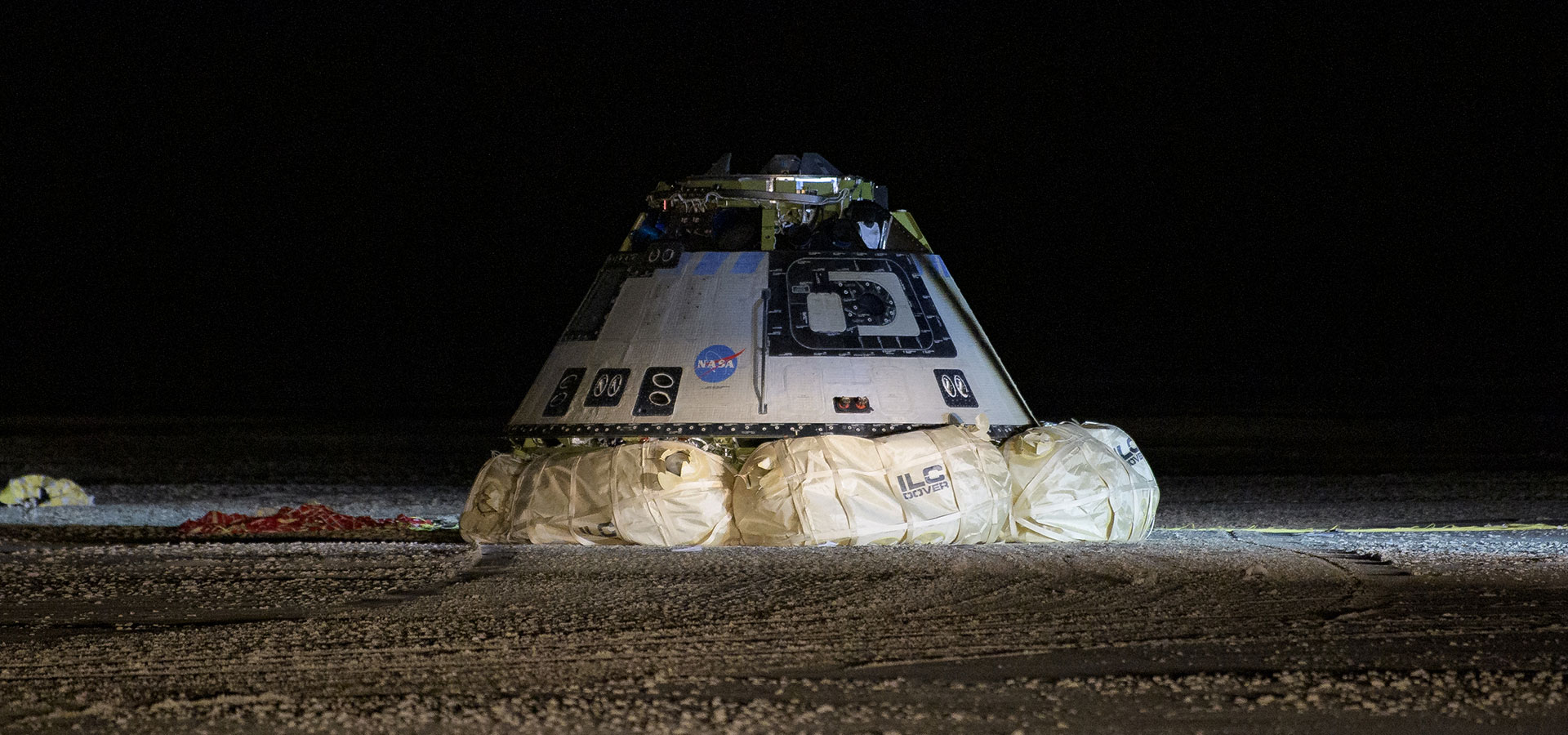
The Landing
December 22, 2019
At 7:58 a.m. Eastern time, Starliner landed on target at White Sands Space Harbor in New Mexico, making history as the first American orbital crew capsule to land on land. Starliner orbited the Earth 33 times and covered a distance of more than 850,000 miles (1.3 million kilometers). Even though the mission was shorter than planned, the Starliner team completed many objectives and learned important information about the vehicle's performance during launch, orbital flight, reentry and landing.